What Is Minimalist Interior Design Style With Examples
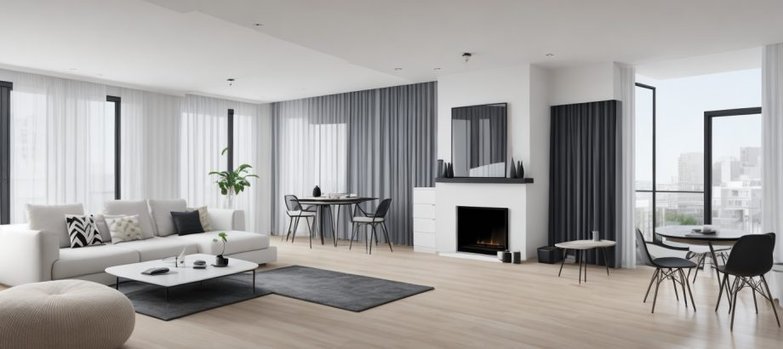
Hey there, are you tired of all the mess and chaos in your living space? Well, I’ve got just the thing for you: minimalist interior design. It’s all about simplicity and class.
In this article, we’ll dive into the core principles, color schemes, and furniture choices that define this style. Prepare to be blown away by some real-life examples and discover how to create spaces that are not only functional but also versatile.
Whether you’re into natural elements or minimalist lighting, this guide will help you transform your home into a sleek and stylish haven.
Key Takeaways
- Minimalist design originated as a response to ornate and cluttered designs, influenced by the De Stijl and Bauhaus movements.
- The design style emphasizes few essential elements, open floor plans, and maximum natural light to create a clean and uncluttered space.
- Neutral colors like whites, grays, and earth tones, along with minimalist materials like wood, glass, and metal, are commonly used in minimalist design.
- Minimalist furniture and decor with clean lines and a lack of ornamentation are preferred, along with functional and efficient spaces that utilize creative storage solutions.
Best Interior Painters Houston →
The Origin of Minimalist Design
To understand the origin of minimalist design, you need to go back to the early 20th century and the influences of the De Stijl and Bauhaus movements.
Minimalism emerged as a response to the ornate and cluttered designs of the time, aiming to strip away unnecessary elements and focus on simplicity and functionality.
The De Stijl movement, founded by Dutch artists, sought to create a harmonious balance between form and function through geometric shapes and primary colors.
The Bauhaus movement, on the other hand, emphasized the integration of art and technology, promoting the use of clean lines, industrial materials, and efficient designs.
Over time, minimalist design evolved and spread across various disciplines, including architecture, interior design, and visual arts.
Its influences and cultural significance can be seen in contemporary minimalist spaces that prioritize clean lines, open spaces, and a sense of tranquility.
Key Principles of Minimalist Interior Design
To achieve a minimalist interior design, focus on using few, essential elements to create a clean and uncluttered space. The key principles of minimalist style involve incorporating design elements that promote simplicity and functionality.
Decluttering techniques play a crucial role in achieving the desired minimalist aesthetics. By eliminating unnecessary items and organizing belongings efficiently, you can create a sense of calm and spaciousness in your living environment.
Spatial organization is another important aspect of minimalist design, with an emphasis on open floor plans and maximizing natural light. By carefully considering the placement of furniture and decor, you can create a harmonious and balanced space.
Minimalist Interior Design Examples
Kitchen Minimalist Interior Design Style
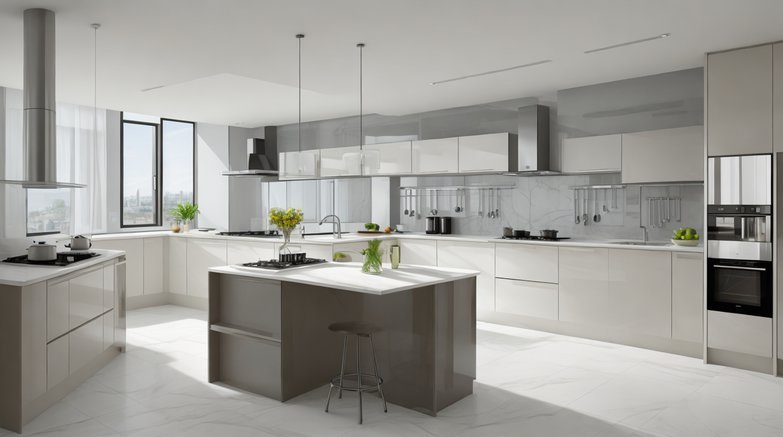
Bedroom Minimalist Interior Design Style
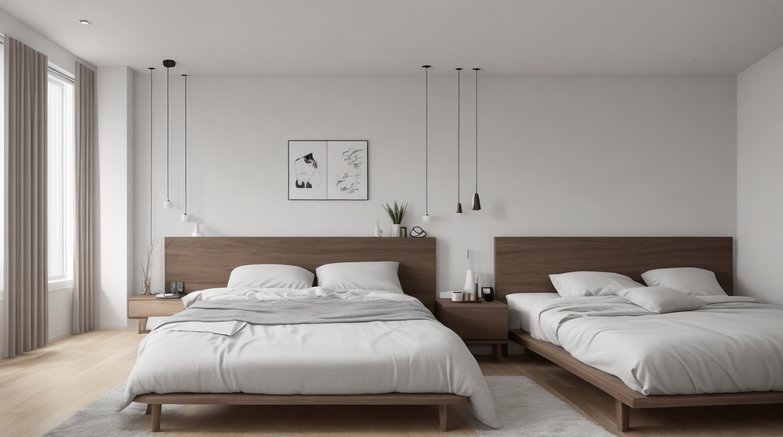
Bedroom Minimalist Interior Design Style
Kids room Minimalist Interior Design Style
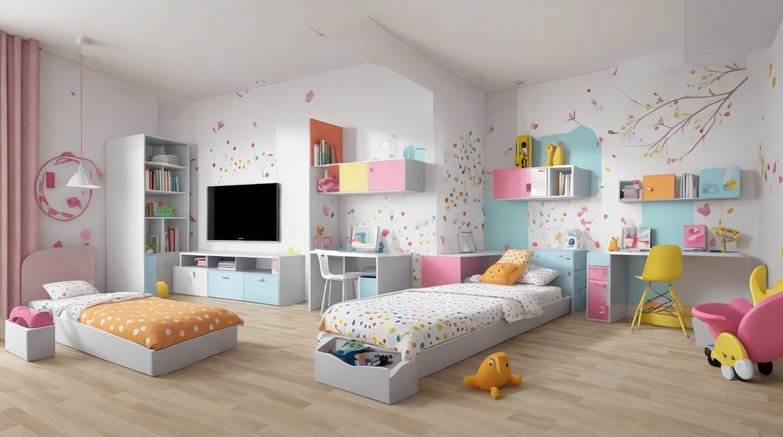
Kids Room Minimalist Interior Design Style
Bath room Minimalist Interior Design Style
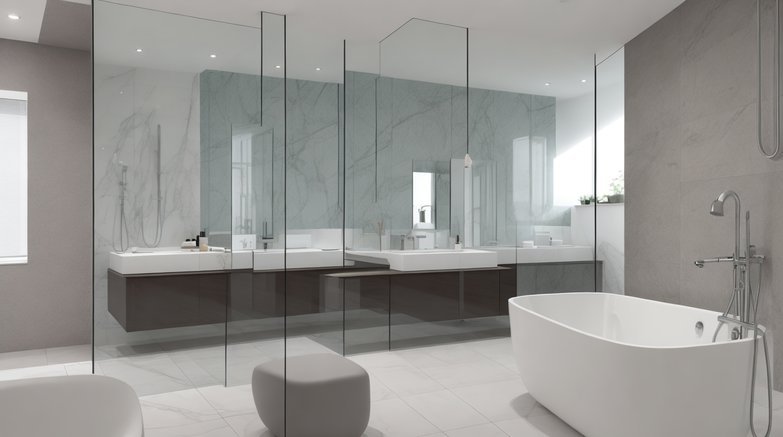
Bath Room Minimalist Interior Design Style
Minimalist Color Palette and Materials
How can you incorporate a minimalist color palette and materials into your interior design? When it comes to creating a minimalist interior, simplicity is key. Opting for a minimalist color scheme, such as a neutral palette with whites, grays, and earth tones, can help create a clean and serene atmosphere. In terms of materials, focus on minimalist materials like wood, glass, and metal, which have a sleek and modern aesthetic.
These materials can be used for furniture, flooring, and even accents like lighting fixtures. Minimalist textures, such as smooth surfaces and clean lines, can also contribute to the overall minimalist look. When it comes to finishes, choose minimalist finishes like matte or satin instead of glossy or shiny. By incorporating these elements into your design, you can achieve a minimalist and clutter-free space.
| Minimalist Color Palette | Minimalist Materials | Minimalist Textures | Minimalist Finishes |
|---|---|---|---|
| Neutral colors like whites, grays, and earth tones | Wood, glass, and metal | Smooth surfaces and clean lines | Matte or satin |
Furniture and Decor in Minimalist Design
When incorporating a minimalist color palette and materials into your interior design, it’s important to carefully select furniture and decor that align with the simplicity and clean lines of the minimalist style. To achieve this, consider the following:
- Modern furniture: Opt for sleek and minimalistic furniture pieces that have a streamlined appearance. Avoid ornate or bulky designs that can clutter the space.
- Simple decor: Choose decor items that are minimalist in nature, such as abstract art or sculptures with clean lines. Keep decorations to a minimum to maintain a clutter-free environment.
- Clean lines: Look for furniture and decor that feature straight, simple lines. Avoid intricate patterns or excessive detailing that can disrupt the clean aesthetic.
Creating Functional and Multifunctional Spaces
Design functional and multifunctional spaces by considering the purpose and efficiency of each area. Space optimization is key in minimalist interior design. Look for ways to maximize the functionality of your space by using creative storage solutions.
Incorporate hidden storage compartments, built-in shelving, and multi-purpose furniture to keep your space organized and clutter-free. Flexibility in design is also important. Consider using modular furniture that can be easily rearranged to adapt to different activities and needs.
Lastly, don’t forget to incorporate minimalistic aesthetics into your design. Use clean lines, neutral colors, and natural materials to create a simple and serene atmosphere.
Minimalist Lighting and Natural Elements
To enhance the minimalist aesthetic and create a calming atmosphere, incorporate minimalist lighting fixtures and natural elements into your space. By focusing on these elements, you can achieve a clean and uncluttered look, while still maintaining functionality.
Here are three key ways to incorporate minimalist lighting and natural elements into your design:
- Natural lighting: Make the most of natural light by maximizing the use of windows and skylights. This not only brightens up the space but also creates a connection with the outdoors.
- Statement lighting: Choose a few carefully selected lighting fixtures that make a bold statement. Opt for sleek and simple designs that complement the overall minimalist theme.
- Incorporating plants: Bring a touch of nature indoors by incorporating plants into your space. Choose low-maintenance plants that add a pop of greenery without overwhelming the simplicity of the design.
Inspiring Examples of Minimalist Interior Design
To get inspired by minimalist interior design, explore these captivating examples that showcase the beauty of simplicity and functionality:
| Category | Examples |
|---|---|
| Minimalist bedroom ideas | A bedroom with a sleek platform bed, minimal decor, and a neutral color palette. |
| Minimalist living room designs | A living room with clean lines, minimal furniture, and a focus on natural light. |
| Minimalist kitchen decor | A kitchen with white cabinets, open shelving, and minimalistic appliances. |
| Minimalist bathroom inspiration | A bathroom with a simple color scheme, clean lines, and a clutter-free countertop. |
| Minimalist home office design | A home office with a minimalist desk, storage solutions, and a calming color scheme. |
These examples demonstrate how minimalist interior design can create a serene and uncluttered space in every room of your home. Embracing simplicity and functionality, these designs promote a sense of calm and peacefulness, allowing you to fully relax and enjoy your surroundings.
FAQ about Minimalist Interior Design
If you’re considering incorporating minimalist interior design into your home, you might’ve some questions about how to achieve this style. Here are some common FAQs about minimalist interior design:
What’re the benefits of minimalist interior design?
Minimalist design can create a sense of calm and tranquility in your space, as well as promote a more organized and clutter-free environment.
What’re some common misconceptions about minimalist interior design?
One misconception is that minimalist design means a lack of personality or character. In reality, minimalist design allows you to showcase your personal style through carefully selected furniture and accessories.
What’re some tips for achieving minimalist interior design?
Start by decluttering and only keeping essential items. Choose a neutral color palette and focus on clean lines and simplicity. Incorporate natural materials and textures for added warmth and interest.
When comparing minimalist interior design to other styles, it’s important to note that minimalism emphasizes simplicity and functionality, while other styles may prioritize ornate details or eclectic elements. Remember that minimalist design isn’t about sacrificing your personal style, but rather finding a balance between simplicity and self-expression.
Frequently Asked Questions
Is Minimalist Interior Design Only Suitable for Small Spaces?
In larger spaces, minimalist interior design offers benefits such as a clean and spacious feel. Creative ways to maximize space include using multifunctional furniture. Different room sizes can be accommodated with minimalist design elements. Natural light can be incorporated to enhance the minimalist aesthetic. Balancing minimalism and functionality is key in spacious interiors.
Can I Incorporate Bold Colors in Minimalist Interior Design?
Yes, you can incorporate bold colors in minimalist design! By using them sparingly and strategically, you can create a focal point. Consider incorporating patterns, mixing textures, and adding statement pieces to enhance the overall aesthetic.
What Are Some Common Misconceptions About Minimalist Interior Design?
Some common misconceptions about minimalist interior design include thinking it’s boring or cold. However, the benefits of this style are numerous, such as promoting a calm and clutter-free environment. By focusing on key elements and utilizing budget-friendly tips, you can create a minimalist look that suits your architectural style. Additionally, you can create a minimalist-inspired workspace by decluttering and keeping only essential items.
How Can I Add Texture and Visual Interest to a Minimalist Space?
To add texture and visual interest to a minimalist space, incorporate natural elements like plants or wood accents. Use statement lighting to create a focal point. Play with different materials for variety. Add pops of color with accessories and create focal points with artwork.
Are There Any Specific Rules for Arranging Furniture in a Minimalist Design?
When arranging furniture in a minimalist design, there are a few rules to follow. Keep the furniture placement simple and functional. Use clean lines and open spaces to create a minimalist space.
